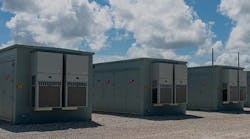For a couple of decades there has been tension (to say the least) between the fossil fuel- and nuclear-based utility industry and renewable energy advocates. The pro-renewable argument has been primarily based on environmental concerns particularly accelerated in the last decade by concerns over CO2 emissions and its assumed assumed impacts on global warming.
Until recently, the utility industry has been reluctant to encourage significant additions of solar and wind generation resources because of their intermittent output, which might compromise system reliability and stability. There has also been the need for consistent interconnection standards to be developed and accepted by utilities, regulators and independent solar and wind generators.
To more or less force the issue, more than half the U.S. states have adopted Renewable Portfolio Standards (RPS) codifying percentage goals and attainment dates for renewable electric generation. The objective is to stimulate market and technology development so that renewable energy will eventually be economically competitive with conventional forms of electric power. It's a carrot-and-stick approach. Utilities that don't meet RPS goals will be financially penalized, mostly through the rate making process. For more on RPS and state by state goals go to Renewable Portfolio Standards Fact Sheet. http://www.epa.gov/chp/state-policy/renewable_fs.html.
The RPS approach seems to be working although no one knows how well goals will be met as they come due in the next few years.
What we do know is that there is quite a diversity of enthusiasm within electric utility planning and engineering departments over renewable generation deployment. This diversity is not always reflected in interactions with regulators and the public media for obvious reasons.
Many utilities are actively encouraging distributed, non-utility owned generation, particularly solar and wind. Other power companies seem to be dragging their feet – grudgingly complying with minimum regulatory requirements.
To get a feel for what goes on around utility back halls and water coolers, we asked readers of Grid Optimization (the majority of whom are power industry professionals). The poll has stabilized around the following results:
• About 20% of readers believe that the utility they work for, or the utility that serves their area, "Is solidly behind getting away from national dependence on fossil fuel and is committed to developing green energy sources."
• 26% answer that, for their utility, "…the value of green projects to be mostly in public relations and getting a nice project photo in the annual report."
• 17% report, bluntly, that the utility "Does only what it has to in order to satisfy regulators and avoid penalties."
• Close to 35% believe their utility "Considers green projects as somewhat of a nuisance, but encourages their development where it makes sense and doesn't compromise the system."
About half as many utilities are "solidly behind" renewable deployment as are just doing it to "avoid penalties" or for public relations. The rest are open, but not wildly enthusiastic, about more renewables where they make sense.
We can expect the utility industry, which has the social compact to provide reliable and high quality electric service, to continue in a go-slow-but-keep-the-regulators-happy mode until intermittent renewables prove out one way or the other.

